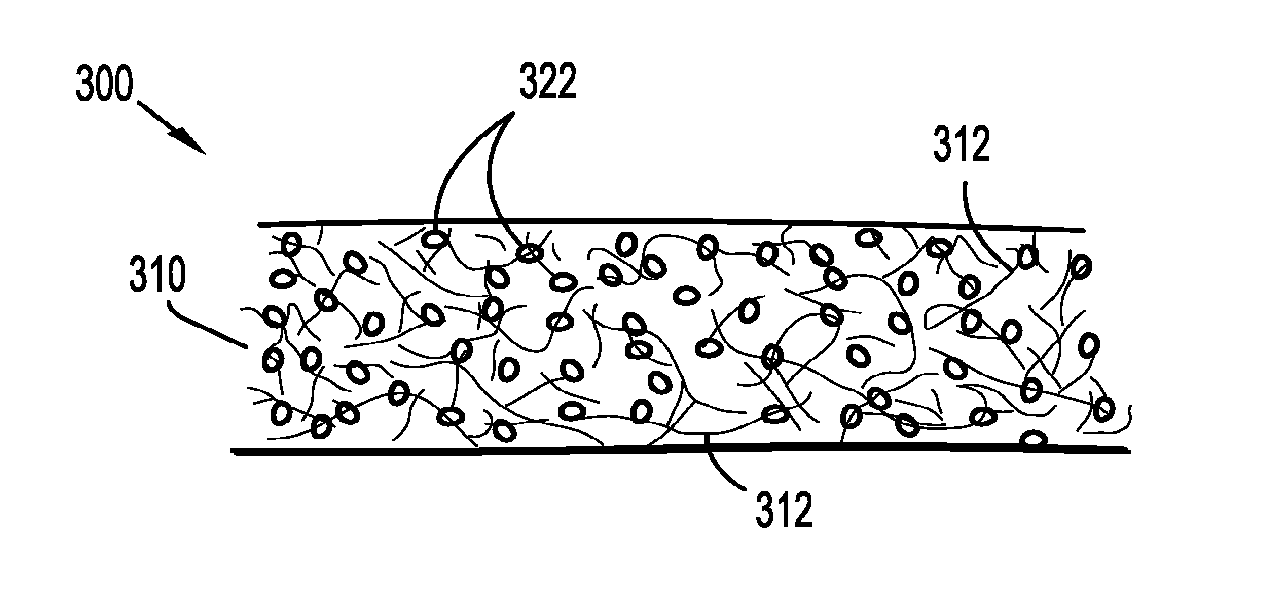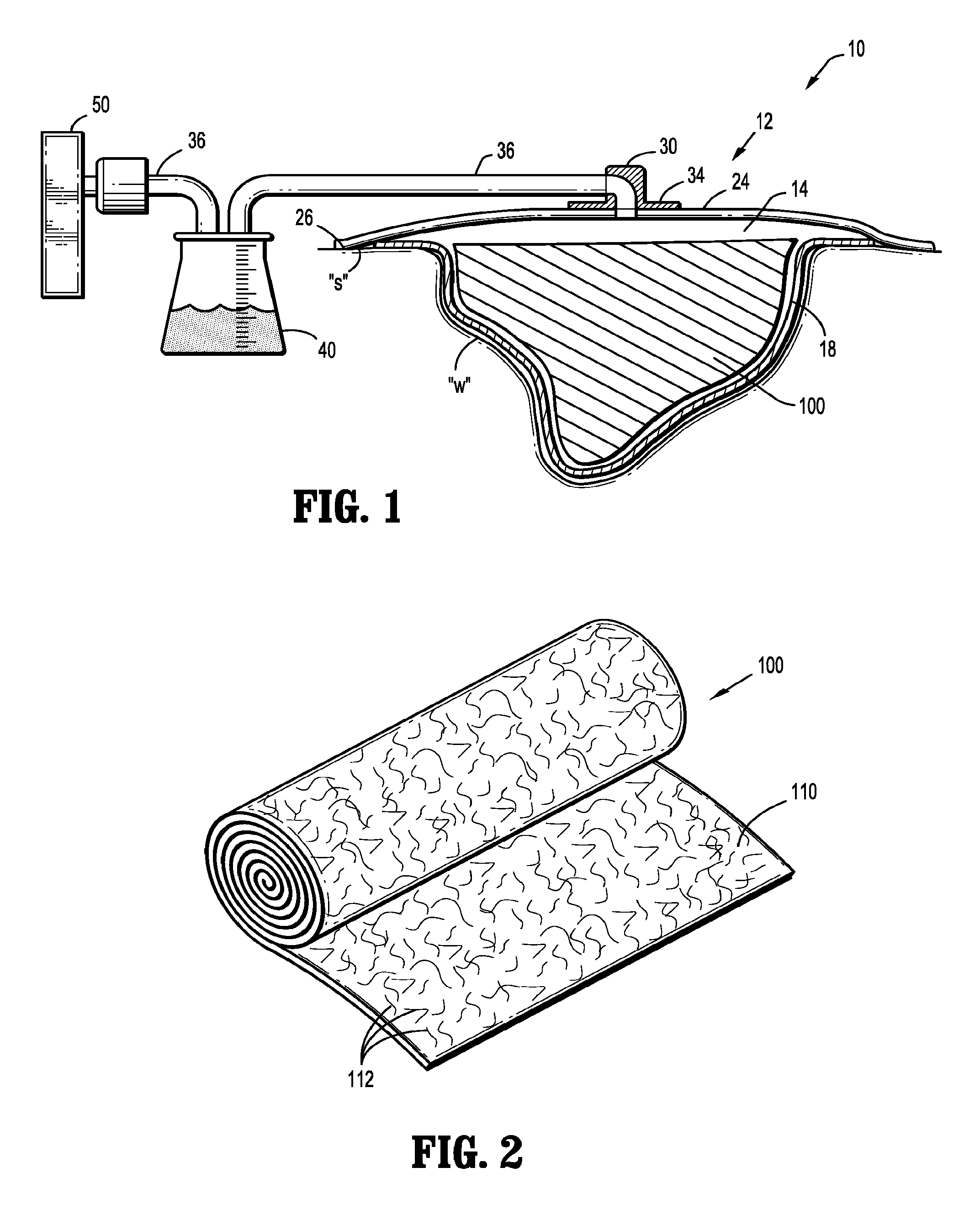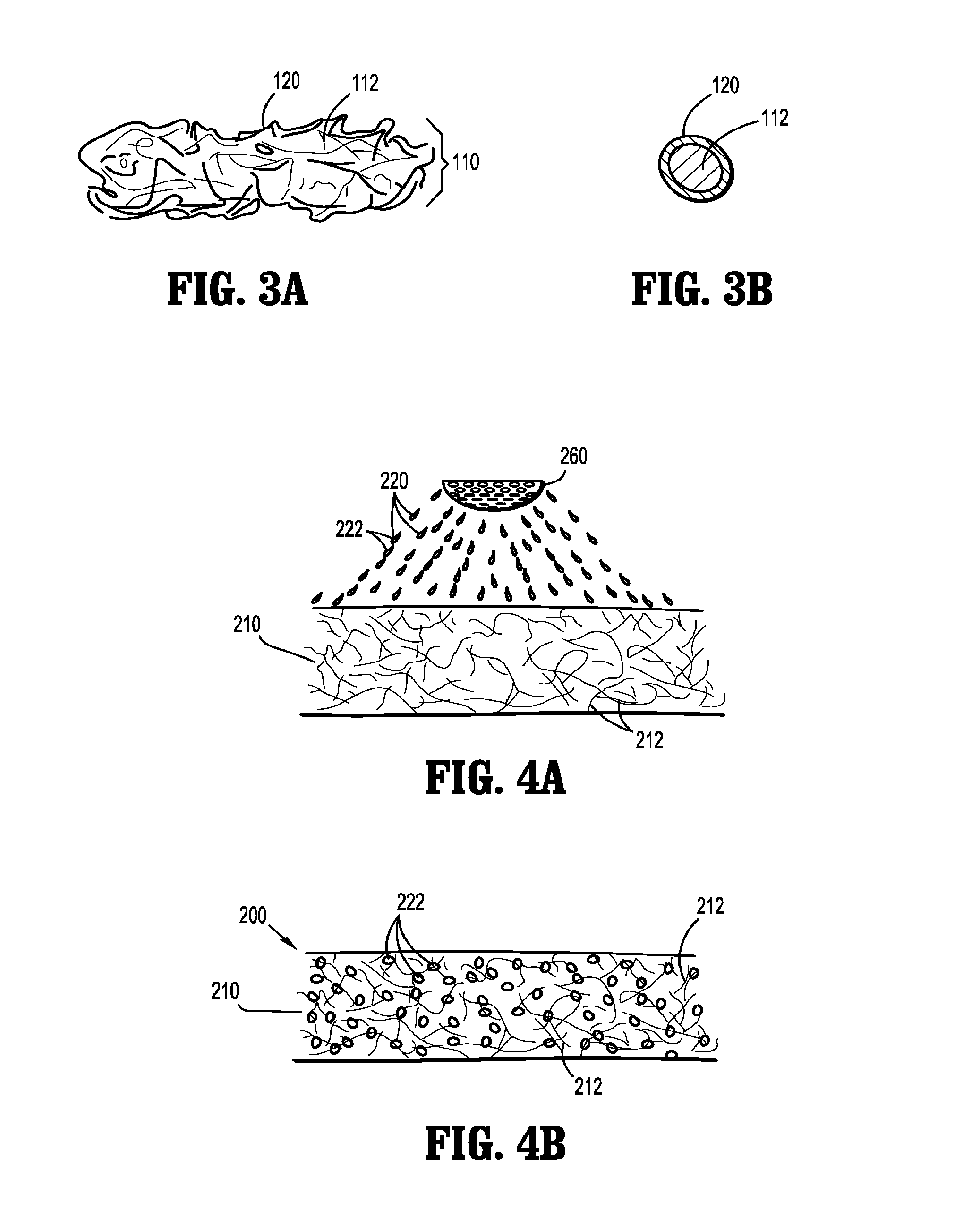Wound Filler Material with Improved Nonadherency Properties
a filler material and non-adherent technology, applied in the field of wound dressings, can solve the problems of affecting the non-adherence of the wound, and affecting the non-adherence of the wound, and achieve the effect of improving the non-adherence of the fibrous material
- Summary
- Abstract
- Description
- Claims
- Application Information
AI Technical Summary
Benefits of technology
Problems solved by technology
Method used
Image
Examples
Embodiment Construction
[0020]The wound dressing of the present disclosure incorporates a surface modified fibrous wound filler suitable for absorbing and / or transferring wound exudates therethrough while exhibiting a low tendency to become attached to a healing wound bed. While the specification refers to the use of the surface modified fibrous material with NPWT, the material may be used in a variety of wound care applications, such as a packing material for low exuding wounds.
[0021]Referring now to the drawings, in which like reference numerals identify identical or substantially similar parts throughout the several views, FIG. 1 depicts an NPWT apparatus according to the present disclosure referred generally as 10 for use on a wound “w” surrounded by healthy skin “s.” The NPWT apparatus 10 includes a wound dressing 12 positioned relative to the wound “w” to define a reservoir 14 in which a negative pressure appropriate to stimulate healing may be maintained.
[0022]Wound dressing 12 may include an option...
PUM
| Property | Measurement | Unit |
|---|---|---|
| critical wetting surface tension | aaaaa | aaaaa |
| critical wetting surface tension | aaaaa | aaaaa |
| wetting surface tension | aaaaa | aaaaa |
Abstract
Description
Claims
Application Information
 Login to View More
Login to View More - R&D
- Intellectual Property
- Life Sciences
- Materials
- Tech Scout
- Unparalleled Data Quality
- Higher Quality Content
- 60% Fewer Hallucinations
Browse by: Latest US Patents, China's latest patents, Technical Efficacy Thesaurus, Application Domain, Technology Topic, Popular Technical Reports.
© 2025 PatSnap. All rights reserved.Legal|Privacy policy|Modern Slavery Act Transparency Statement|Sitemap|About US| Contact US: help@patsnap.com



